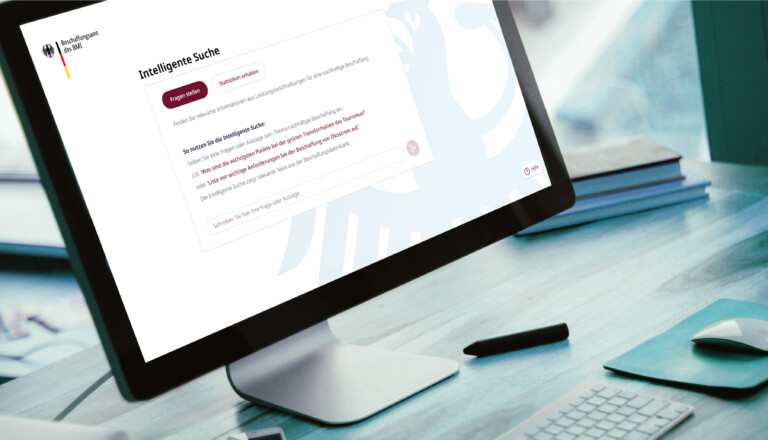
Case study
by Nortal
Estonia helps people with reduced work ability return to the labor market
TETRIS is an information system commissioned by the Estonian Unemployment Insurance Fund for the purpose of performing fair and accurate work ability assessments and granting disability benefits in accordance with legal and procedural requirements.
The Work Ability Reform of 2016 obligated the Fund to take over the bulk of work ability assessment and work ability benefit provision from the Social Insurance Board. With over 100,000 potential clients and tight deadlines, the reform’s success depended on optimized business processes and a versatile information system, which Nortal delivered.

Challenge
In 2016, Estonia intended to introduce an extensive work ability reform, which would affect more than 100,000 people receiving disability benefits. The reform set out to achieve four major goals:
- Encourage a better and more supportive attitude in society towards people with reduced work ability, which would also have a positive effect on their self-image.
- Handle all of the people currently receiving disability benefits on an individual basis and determine their actual eligibility
- Help people with reduced work ability to return to the labor market
- Increase tax revenue and reduce costs on a national level
What made the task even more challenging was the legal obligation to assess an applicant’s work ability within 30 days and pay the benefits by the 10th of each month. Any delays here would impair the quality of life of the applicant, not to mention the related overdue charges the Fund would have to incur. Knowing this, Nortal began designing a system in 2015 that would tackle the challenges in a comprehensive way
Opportunity
Studies had shown that a remarkable 69% of employers would be willing to employ people with reduced work ability, which presented an opportunity to bring the two parties together. If executed successfully, not only would it bring countless people out of the fringes, but the state would also benefit by collecting more taxes and paying out fewer disability benefits.
The goal of providing an actual personalized assessment played a large part here. Where the old system measured all applicants by the same yardstick – mostly because the individual approach would have entailed impossible paperwork – the new system, with its fast electronic procedures, brought the person back into focus.
So now, instead of assessing the percentage of the disability, the system assesses the ability to work. Instead of paying a disability pension, the system provides work ability benefits.
Approaching each person individually also served to fulfill another important purpose. During the domestic economic crisis of 2009, the number of people claiming disability benefits grew out of proportion. For the most part, it was caused by lax eligibility testing procedures and the tendency of General Practitioners to grant incapacity certificates too easily. As a result, it was suspected that thousands of people were receiving benefits without a due cause, costing the state millions of euros annually. The old paper-based system, however, provided no feasible way to prove it.
By prioritizing personalized job matching, TETRIS facilitates successful labor market reentry beyond the limitations of the previous system.

After consulting with the client, Nortal concentrated on the following key activities:
Processes
Adjust and revamp business processes related to work ability assessment to manage the high volume of applicants and take advantage of electronic services.
X-road
Use X-Road, the electronic backbone connecting the nation’s registers and databases, to retrieve as much data about the applicant as possible. On the basis of complete and accurate information, medical included, the person’s eligibility for benefits could be more easily determined, and attempts of fraud discovered.
Portal
Build a Web-based portal where medical experts could review the self-assessment forms submitted by applicants, check the information against data retrieved from national registers, and produce a conclusive expert statement on the matter.
Solution
Nortal sought to optimize those parts of the business processes that were still designed after the old-fashioned, paper-based methods of customer service. For example, consultants needed to manually query each register over X-Road to collect information about the applicant or spend extra time before the first appointment analyzing which services could be legally offered, to avoid costly appeals or service cancellations later. There was also no way to send financial information from the consultant’s desk to the Fund’s accounting system, or a reliable method for keeping up to date with all open cases.
To raise data quality to a new level and support automated decision-making, TETRIS was connected to 13 national registers; such as the Employment Register, the Commercial Register, and the Health Insurance Database. Data collected from, and verified against, the registers enables to determine accurately a person’s eligibility to receive disability benefits, taking into account their income, insurance coverage, state of health, and more. Conversely, any grounds for exclusion would have a clear and legitimate reason.
Since the system heavily relies on the input of medical experts, it was reasonable to build contract management features into TETRIS. Now, contracts with doctors are automatically created, renewed, and terminated; assessments are automatically priced based on the contract’s parameters; and each contract’s volume and fulfillment can be monitored.
By 2020, nearly 26,000 people with disabilities have returned to the workforce since the beginning of the reform.
Result
TETRIS makes the goals of the Work Ability Reform attainable. Officials are freed from needless manual work, more people with disabilities are entering the labor market, and the state collects increasingly more taxes.
Managers of the Fund are delighted to finally have an accurate overview of contracts and financial volumes, helping them to authorize new procurements or remind healthcare providers of contractual due dates. TETRIS brings up-to-date financial information automatically to their fingertips.
About TETRIS
TETRIS is a valuable tool for managing the entire work assessment process for a number of officials and medical experts. It creates value by leveraging optimized business processes to enable fast, consistent, transparent, and timely work ability assessments, saving the Unemployment Insurance Fund both time and expense.
TETRIS seamlessly weaves together all the relevant information:
- Information submitted by an applicant
- The applicant’s medical data retrieved from national registers
- Medical experts’ professional assessment of the case
- Decision reached well within the 30-day limit
Moreover, due to the large number of applicants, rigid deadlines, and the complexity of each case, the automated facilities of TETRIS are crucial in enabling the Fund to make allowance payments on time and in correct amounts, ensuring legal compliance.

Other key features of TETRIS
- Automatic compensation of costs to the applicant (such as the costs of visiting the unemployment office or paying for a sign language interpreter);
- Automatic monitoring of each application’s status and the informing of the official of outstanding issues such as upcoming due dates or deficiencies to be remedied;
- Automatic creation of billing records in the Fund’s accounting system;
- Joint reception of work ability applications with the Social Insurance Board and sharing the assessment results (since the Board assesses the degree of severity of a disability).
Based on data from 10 different registers, the smart solutions of the Fund automatically calculate and process approximately 100,000 work capability allowance and unemployment benefit payments (totaling €27M) per month.
Use of TETRIS has brought the following benefits, and more:
95%
of all contracts with medical experts are now signed digitally
90%
of work ability cases are completed a week before their due date
30%
of decrease in application processing time, per case
Get in touch
Let us offer you a new perspective.


